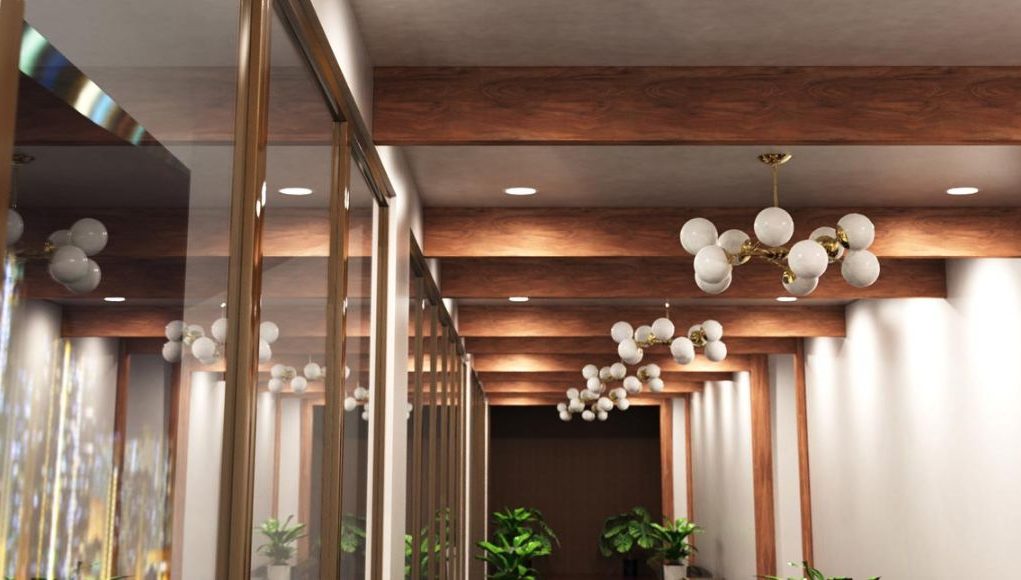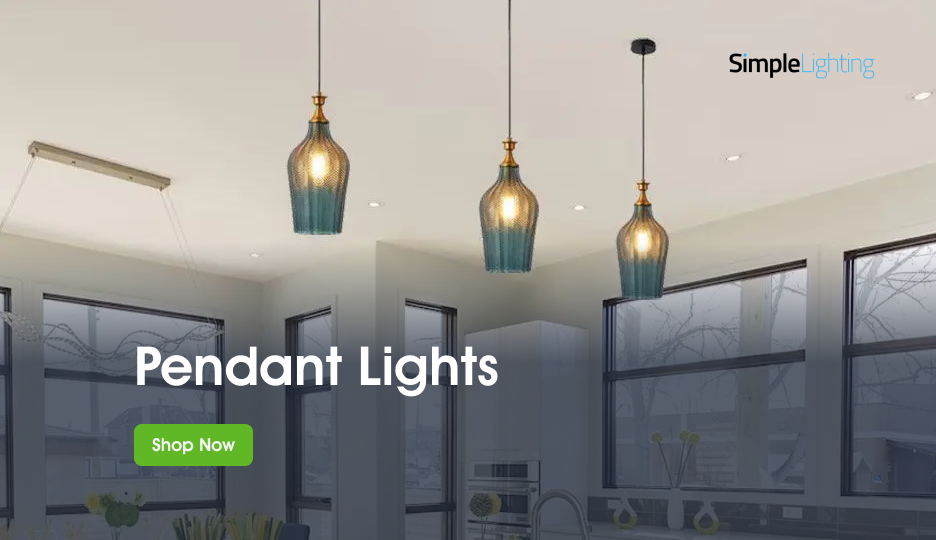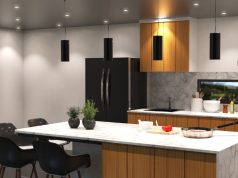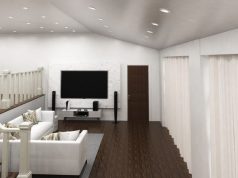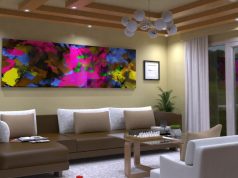When designing your lighting system, which areas in your home immediately come to mind? Most probably the kitchen, living room, or bedroom. Staircases and hallways are often overlooked. And hey, we don’t blame you. People don’t frequent these places. But that doesn’t mean they’re not important.
These transitional spaces set the tone as soon as someone steps into your home. They also guide movement safely from one level to another.
With the right ceiling lighting, your hallways and stairs can feel as inviting and stylish as your main rooms, while remaining highly functional.
And that’s what we’re going to go through in this post. Ready your cuppa, because we’ll walk you through practical and inspiring hallway and staircase ceiling lighting ideas, covering everything from safety standards and placement to stylish design touches.
Why Hallway & Staircase Lighting Matters
First impressions matter. The hallway is usually the very first space your guests see. A well-lit entryway immediately creates warmth and sets the stage for the rest of your home.
If the first thing your guests see is a dark, dingy hallway, they wouldn’t expect the rest of the house to be any different, nor would they feel invited at all.
Safety can’t be compromised. Stairs are one of the highest-risk areas for accidents, particularly in dim or shadowy lighting conditions. We’ve all seen movie scenes of people falling down the stairs. Not a great real-life experience.
Proper illumination ensures each step is visible, reducing the chances of trips and falls.
Ambience in narrow or dark spaces. Many hallways lack windows, and staircases often sit in the darker corners of a house. The right ceiling lights can counteract gloom, visually open up the space, and even highlight architectural details such as bannisters, cornices, or artwork.
What we’re trying to say here is that your hallways and staircases are places where you should not just feel like you’re moving through a corridor. But rather, you should feel that you’re experiencing a purposeful and welcoming space.
Best Types of Ceiling Lights for These Areas
Your ceiling light is dependent on the style and structure of your hallways and staircases. And the reality is that not all hallways and staircases are made the same. This means that there’s no one-size-fits-all ceiling light for these spaces.
Let’s explore the most effective types.
Flush & Surface Mount Lights
Flush and surface mount fixtures are a popular choice for hallways with standard or low ceilings. Their close-to-ceiling design means you won’t risk bumping your head. They also provide wide, even light coverage!
Why they work here: Got a narrow corridor? Pendant lights and chandeliers might be too much. These lights are a better choice.
Style options: Available in sleek modern finishes, traditional glass domes, or even decorative patterns to add personality.
Pro Tip: Opt for LED flush mounts to combine a long lifespan with reduced energy consumption.
Pendant Lights for High Ceilings or Landings
But what if you have a high ceiling? That means you have more space to spare, and pendant lights can help you make a stunning statement. A well-chosen pendant acts as a focal point, drawing the eye upwards and emphasising the height of the space.
Why they work here: Helps add personality and character to the space, transforming a functional route (the hallway) into a design feature.
Style options: Glass globes for a contemporary look, lantern-style pendants for a classic feel, or clusters for modern flair.
Safety Tip: Always ensure pendants are hung at the right height so they illuminate without obstructing head clearance.
Recessed Downlights for Staircases
Pendant lights and chandeliers will not work for staircases. They will only serve as a distraction for people going up or down the stairs, which is a safety hazard. Installing hanging lights will also make the stairs feel cramped.
That’s why recessed downlights are ideal for staircases where precise, directional lighting is required. You can discreetly install them into the ceiling, creating a clean, modern look while ensuring every step is visible (and safe).
Why they work here: They reduce shadows on stairs and can be strategically spaced to cover the full run.
Flexibility: Dimmable options allow you to adjust the brightness according to the time of day or desired ambience.
Here’s a design idea: Combine ceiling downlights with wall-mounted step lights for a layered approach to safety and style.
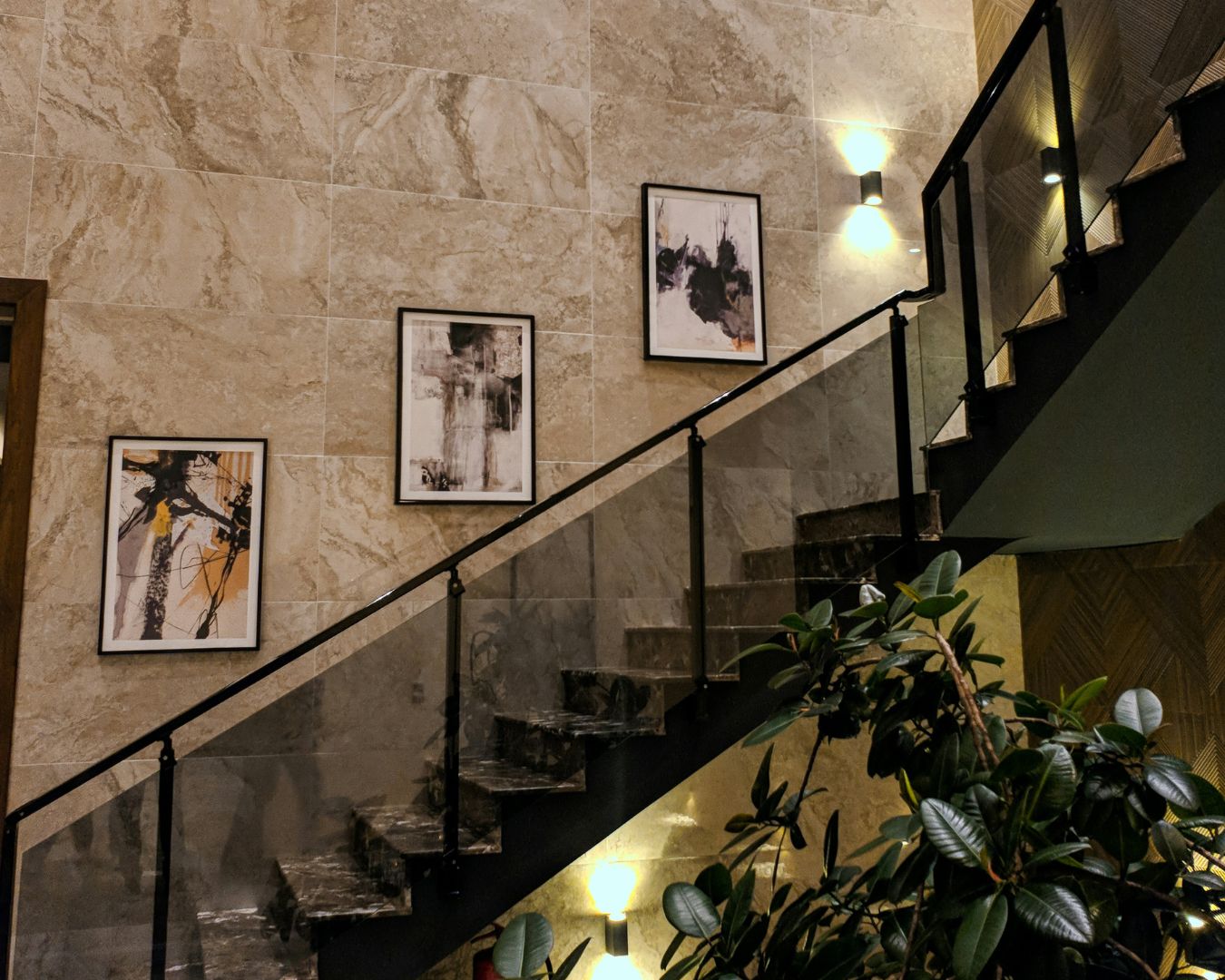
Balancing Practicality & Style
Here’s the thing: lighting your hallway or staircase isn’t just about picking a nice fixture. It’s about getting the right balance between function and aesthetics.
Here are some important considerations when lighting these spaces:
Spacing: Ceiling lights should be spaced evenly to prevent dark patches. For staircases, ensure lights are placed where shadows naturally fall. For hallways, a rule of thumb is one fixture every 2 to 3 metres.
Height safety: Avoid fixtures that hang too low, especially in narrow hallways or staircases where people carry bags, laundry baskets, or bulky items.
Glare concerns: Opt for diffused or frosted shades to soften the light and minimise harsh glare, especially on glossy floors or polished handrails. You should always aim for soft and bright illumination, not harsh and painful light.
The primary reason for your lights should be their practical benefits. Aesthetics is only secondary. Practical considerations ensure your lighting looks beautiful while still making movement through these spaces safe and seamless.
Light Flow & Path Lighting
Even lighting is essential in corridors and staircases. Ever seen a gap in lighting in a hallway or a staircase? Makes the hallway feel cramped and the stairs dangerous, doesn’t it?
Ensuring even light — Use multiple light sources, such as a series of recessed downlights in a staircase ceiling or a row of flush mounts in a long hallway, to prevent shadowy patches. Proper planning and layout are key.
Avoiding dark spots — Stagger fixtures so the light overlaps slightly, creating a smooth flow from one area to the next.
Automated lighting — Sensors are ideal for hallways and staircases. Motion-activated lights turn on automatically as you walk through, saving energy and ensuring you’re never fumbling for a switch. Perfect for when you or your guests have luggage or heavy items on hand.
Timers or dimmers — Timers keep hallways lit during peak hours, while dimmers allow you to soften the lighting at night for a gentler ambience.
When planned well, light becomes a natural guide, leading you and your guests safely (and stylishly) from one area of the home to another.
Decorative Touches
Once you’ve figured out the practical side of your lighting, expressing your style comes next (as it should). Beautiful lighting has the power to elevate what is normally a plain-looking hallway or staircase into a feature of the home.
Disclaimer: Many decorative lighting fixtures are not ceiling lights, but rather help complement the ceiling lights, adding depth and beauty to the space.
Statement fixtures: A sculptural pendant or chandelier can become the centrepiece of a tall landing.
Accent lighting: Use ceiling lights in combination with wall sconces, LED strip lighting along stair rails, or artwork spotlights to add depth and visual interest.
Reflective finishes: Metallic fittings in brass, chrome, or matte black, complement your interior scheme and add subtle polish.
Layered lighting: Combine general ceiling lighting with accent lights for a design-led, flexible space.
Remember, even the most compact hallway can feel luxurious with the right decorative detail.
Maintenance Tips & Energy Efficiency
Hallways and staircases are high-traffic areas, which is why your ceiling lights need to be practical to maintain and efficient to run.
Easy-to-clean designs: We always say this, but light fixtures with intricate design parts are great to look at, but they’re dust magnets. Choose fixtures with smooth surfaces or enclosed shades to minimise dust build-up. Open fixtures can be beautiful but require more frequent cleaning.
Durable finishes: Long-lasting light fixtures are crafted from high-quality materials. Opt for materials that resist tarnish and fingerprints, especially in areas where your lights are within the reach of bystanders and passersby.
LED efficiency: Always prioritise LED bulbs. They consume significantly less energy, last up to 25 times longer than traditional bulbs, and emit less heat, which is ideal for enclosed fixtures.
Long-lasting choices: Did you know that installing dimmable LEDs can extend bulb life further and give you more control over ambience?
Check accessibility: For staircases, ensure fittings can be reached safely with ladders or telescopic cleaning tools.
Efficient, low-maintenance lighting ensures your hallways and stairs stay as attractive on a daily basis as they are on first impression.
Final Thoughts
It’s high time you stopped thinking about your hallways and staircases as just passageways. They’re an integral part of your home. They’re spaces used to welcome guests warmly, guide them securely, and even showcase your personality.
Just remember this golden rule in lighting: balance practicality with personality. The right fixtures, spacing, and controls will ensure your hallways and stairs shine as brightly (and beautifully) as any main room of the house.
You can explore Simple Lighting‘s range of high-quality ceiling lights to start creating elegant staircases and hallways that meet safety standards.


